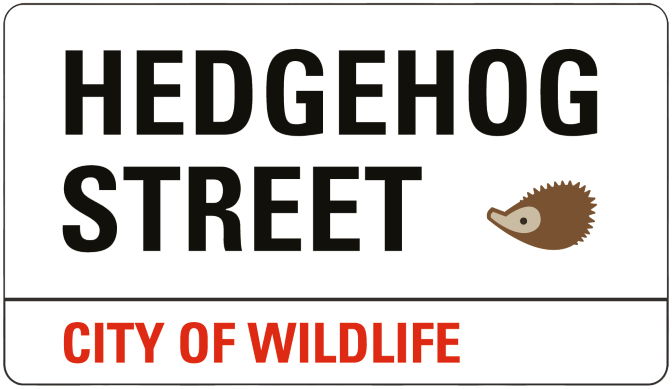Home › Forums › Hedgehog signs and sightings › Hedgehog in the garden › Reply To: Hedgehog in the garden
Hi Natalie
Welcome to the Forum. So pleased that you have a hedgehog visiting there – and that you are so pleased!
First of all food.
Hedgehogs, do love mealworms, but unfortunately, they aren’t good for them. As well as having little nutritional value to the hogs, they have an imbalance of phosphorous and calcium so that they can lead to bone problems. So please stop feeding those. You may find you have to reduce them gradually, i.e. a few sprinkled on the top of some other food to start with, because they can become a bit addicted to them.
The best things to supplementary feed hedgehogs are cat/dog/hedgehog food or cat/kitten biscuits. Other than water, nothing else is necessary. Water is all they need to drink, but is vitally important. I use shallow plant saucers – not so deep that a hoglet could get stuck in. Hogs are very clever at tipping water saucers over, so a wide one will work better. I have several around the garden – 24 hours a day just in case a nursing mother or dehydrated hedgehog is desperate for a drink in the middle of the day. More information on feeding hogs: https://www.hedgehogstreet.org/help-hedgehogs/feed-hedgehogs/ There are various types of hedgehog foods around these days.
Re. placing the hogilo. Probably best in a peaceful, sheltered area of the garden – not too close to where you feed. Under a bush is fine, but not in the sun. If you think that is the best location, maybe you could cover the part which is in the sun over with some brush wood. The thing to remember about places where hogs make nests – hibernation nests, in particular – is that they make them so that they are well insulated which helps to maintain a regular temperature. More information about hog houses: https://www.hedgehogstreet.org/help-hedgehogs/hedgehog-homes/
But some really important things to do are to make your garden more wildlife friendly. Some ideas: https://www.hedgehogstreet.org/help-hedgehogs/helpful-garden-features/
There is a lot of interest in wildlife friendly garden on the gardening programmes on TV at the moment. I believe the Friday 12th 9.00 p.m. edition of Gardeners World will be concentrating on wild flowers and wildlife friendly gardens. You may still be able to see the garden that featured on Springwatch on catch up TV (not sure whether it’s still available) if you haven’t already seen it.
Also making your garden and others easily accessible is very important. https://www.hedgehogstreet.org/help-hedgehogs/link-your-garden/ Many hedgehogs are killed crossing roads. As well as increasing the habitat available to the hogs, they are less like to have to cross roads if they can easily access enough habitat via linked gardens. So try to encourage all your neighbours to link their gardens and introduce wildlife friendly features.
There is sometimes a misconception that a wildlife garden is necessarily an untidy garden. This might put some people off, but it doesn’t have to be untidy. There are many things which can be done to make gardens more wildlife friendly whilst still keeping them tidy. For instance a wild flower area can be confined within a paved area, bug hotels can be made in boxes (I have an old tea chest full of old bits of twigs, small branches, corrugated cardboard, etc.) or gabion baskets, etc.
Planting nectar rich plants is good, but also planting loads of plants and shrubs – in the wild, plants grow all mingled in together. But you can also have a, what some might consider untidy, bramble patch, nettle patch, etc. (nettles food plant for many caterpillars). Native species are not essential for providing nectar, etc, but are for other parts of insects’ life cycles. You could consider native shrubs, i.e. hawthorn – lovely white flowers in the spring and red berries in the autumn – food for the birds, but also planted in groups or hedges, could provide nesting places for the hedgehogs as well as birds. Hedgehogs eat caterpillars, as well as beetles, earthworms, etc. So, a generally wildlife friendly garden is good for them.
If you have a pond, make sure there are as many access/exit places as possible. Hedgehogs can swim, but can’t get out if the sides are too steep. Birds will also benefit from sloping sides.
Re. telling if the hog is a male or female – it isn’t possible by just looking at them, although you may be able to spot the males on video from your trail cam – they have a ‘blob’ roughly mid-abdomen. (usually most easily visible from the side, I find) Later on if you get more hogs visiting, you may be able to tell from their behaviour. The male will circle the female during ‘courtship’ whilst she huffs and turns around and around (so that her face continues to be roughly facing his). This can go on for hours, but doesn’t always result in mating. Sometimes one or other of them just gives up and wanders off! The males can be a bit aggressive and biff and roll each other up. The females will sometimes nudge another one, grumpily, but in my experience don’t roll others up.
Good luck. Hope you continue to have many happy hours hedgehog watching.
P.S. https://www.hedgehogstreet.org/photographing-hedgehogs/
Or you could put a photo on as your profile picture.

